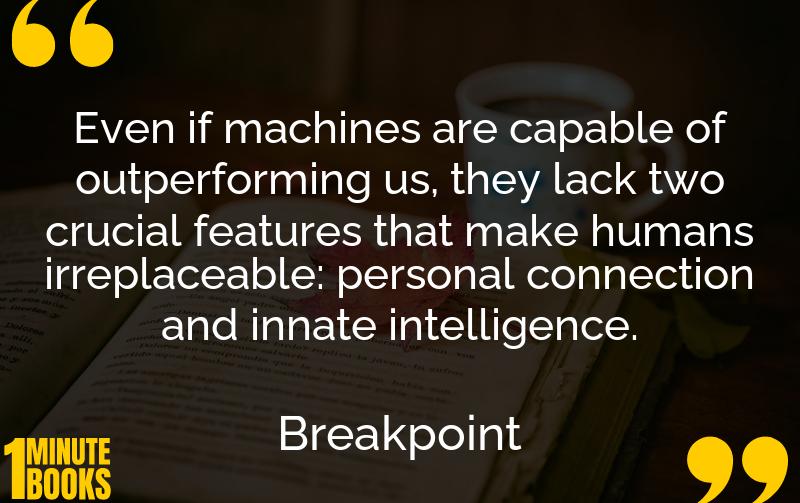
Breakpoint explores how networks—biological, social, and virtual—develop and function. Author Jeff Stibel posits that the Internet has reached its ‘breakpoint’ in growth. He argues for balance and potential symbiosis with human intelligence.
Main Lessons
- Machines surpass humans in certain tasks but lack personal connection and innate intelligence, crucial human traits.
- Humans are naturally wired to function in networks, benefiting from unique skills each member offers.
- Healthy networks follow a growth cycle: initial growth, breakpoint, and equilibrium.
- The internet’s immense growth has led to a breakpoint, requiring strategic streamlining for future sustainability.
- Successful networks prioritize quality, not quantity, just as our brains reduce unnecessary connections over time.
- Effective networks thrive on self-organization, avoiding micromanagement for better efficiency.
- Communication is key; diverse methods include language, pop culture references, and digital symbols like memes and emojis.
- Our brains and search engines both prioritize information based on relevance and importance.
- Technological advances might allow human and virtual networks to merge, benefiting from each other’s strengths.
- The internet consumes substantial energy resources, risking potential future power challenges.
- Stibel anticipates a future where technology intuitively integrates with human cognition for enhanced problem-solving.
- Network success relies on communication, effective organization, and a balance between growth and sustainability.








